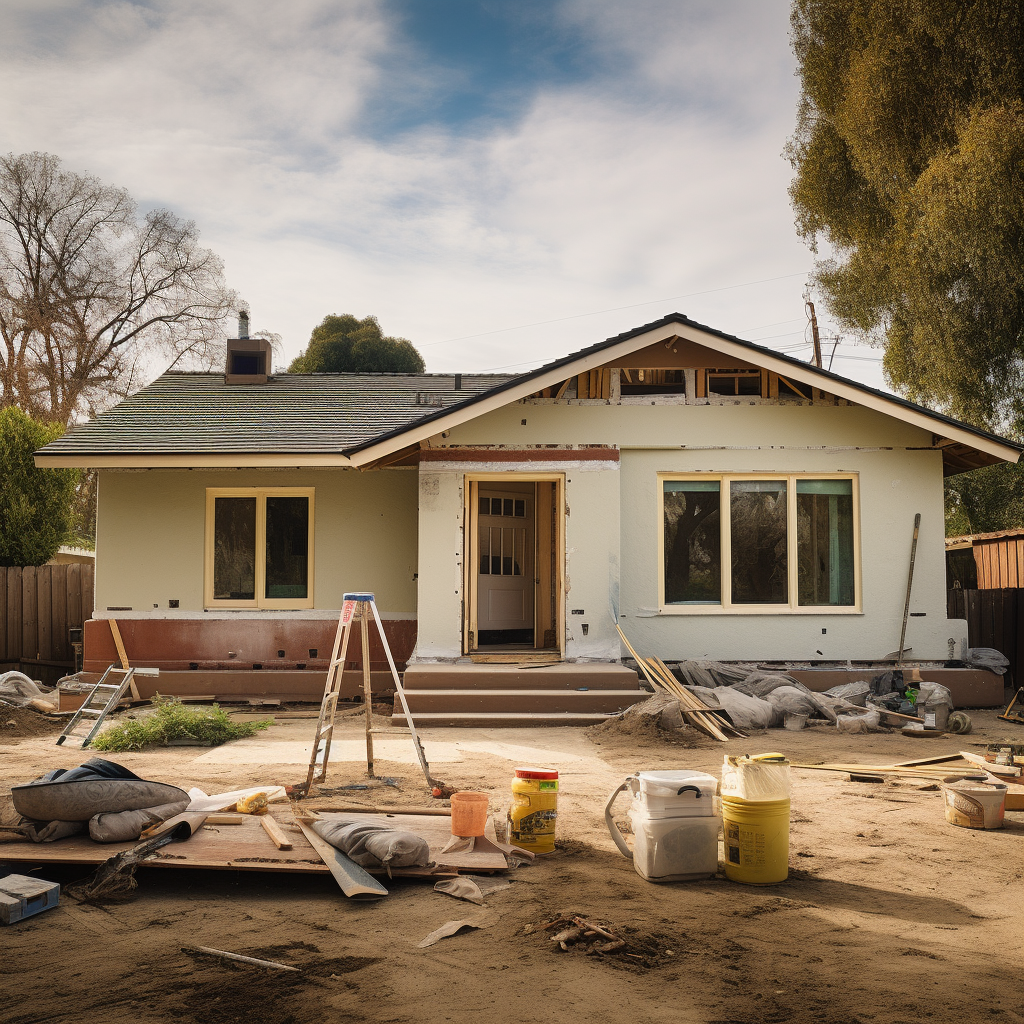You may not realize how much work goes into the permit process and overall project as a California homeowner or person interested in building a new home. You may ask yourself: What is required to build a home? Can I start building immediately without a permit or license? Do I require a permit to start building? Do I need a building permit for my project? These questions all lead to the topic of California building permits.
This article will break down the main elements of building permits for those who want to know more about them.

What is a building permit?
A building permit is an authorization a city, county, or state gives to build or construct a project. Not only are building permits required for new construction but also for renovations and remodeling projects. Building permits are issued to local authorities to ensure that the construction and building process complies with the codes and health and safety standards.
What is required for a building permit applications?
Local jurisdictions are responsible for making the decisions that govern the area within their boundaries. The laws of the country are also included in the regulatory decisions. The local building codes will determine the requirements of each building permit.
California has stricter environmental regulations than other states, but every municipality has its own interpretation. The following list shows what types of projects are more likely to require a permit.
- Demolition of a building
- Roof Replacement
- Plumbing, electrical, and mechanical replacement
- Addition of an accessory dwelling (ADU) unit or junior accessory dwelling (JADU). Converting existing rooms into ADUs is included. You can convert a garage into an ADU, for example.
- Change the layout of your house
- Addition or removal of exterior wall
All new constructions require building permits. It is important to remember that depending on the size of the project, additional permits may be needed. These permits may include stormwater, electrical, plumbing, grading, or mechanical permits.
Contacting the local permitting department is the best way to determine if a building permit will be required. Consult the local permit department to determine if a building permit is needed and which type.
It is also essential to consult with professionals to find out what part of a project needs a permit, and what steps need to be taken to get the permit. Parceloop can help you with this process.
How to get a building permit?
As mentioned, it is best to consult the local authority about their requirements before deciding on a building permit. There are certain fundamentals to obtaining a permit. Here are the steps for obtaining a building permit:
- Submit the building permit application to your local building official or department
- Prepare the relevant plan drawings. Employ a qualified architect or other professional to help you create the layout of your building and ensure that it meets building setbacks, zoning, and other regulations.
- Prepare yourself for the approval process. Plan approval can take place at the building department or over a period of time based on the project scope. The approval process for building plans can be an iteration in which the plan reviewer gives comments, and the revised plan is then approved.
- Get the permit. The city or county will give you permission to build the project. It must be done before any construction can begin.
- Schedule building inspections. Schedule the inspections.
- Final Approval. The city and county will give final approval after completion.
- Building departments typically document and assess plan changes made during construction. The homeowner is responsible for updating the plans to reflect any changes made during construction.
The building permit process differs in each jurisdiction, but these steps are followed at some point when you receive a permit.

Who is responsible for the permit?
As the process above appears to be very complex for a homeowner or developer, in most cases, a contractor is hired and charged with obtaining building permits. As the contractor is hired for the project's construction phase, they are responsible for obtaining the building permits and scheduling inspections.
Hiring a licensed professional contractor is best if you have a simple scope. The city or county will hold the person responsible for any damages. However, determine the scope of the project and whether it requires a contractor.
Do I Need A Permit When Selling a House?
Obtaining a building permit when selling a house in California is crucial for various reasons. Firstly, it ensures that any modifications or renovations made to the property meet the state's safety and building codes, safeguarding the structural integrity of the house.
This provides prospective buyers with confidence in the property's condition, potentially increasing its market value. Additionally, having the proper permits in place avoids legal issues down the line, preventing potential buyers from encountering unexpected obstacles or complications during the purchasing process. Buyers often seek assurance that the property complies with regulations, making a valid building permit an essential document for a smooth and transparent real estate transaction in California.
California Building Permit Requirements
Building Permit California requirements depend on the structure's type and size. California building permits are required for prefabricated cabins if they exceed 120 square feet.
Plans and specifications must be submitted to the local building department for them to review and approve your permit. The cabin must also meet California Building Code requirements and other applicable regulations.
Building permits are required to construct and install prefab ADUs in Southern California. ADU permits are obtained by submitting building plans and specifications to your local building department and receiving approval from your local zoning authority.
For modern homes prefab in California, it is also required that they meet California Building Code and other applicable regulations.
California Building Code and local ordinances require that "pod" houses (commonly known as modular homes) be built and permitted in accordance with the California Building Code. Plans and specifications for modular homes must be submitted to local authorities for approval as part of the permit process.
California may have different requirements for construction permits. You should check with your local building authority for the regulations.
I forgot to get a permit...
The majority of licensed and ethical contractors advise against skipping building permits. But, for the sake of assessing, let's discuss what happens if the building permit isn't pulled. City or county officials will open a case for code compliance against construction projects without the proper building permits.
In this case, the city or county may charge fees or require the project to get the building permit in a specific period. If you obtain a building permit retroactively, it may be necessary to demolish work that has already been completed or reduce the amount of space available for construction.
Unpermitted work will not be included in an appraisal of the property. To avoid time and money wasted, it is essential to obtain permits on time.

Ready to get building!
Building permits California are required for all new construction and renovation projects. Building permit procedures vary depending on the city or county in which the project is located.
Parceloop will help you consult on the scope of work, building permits requirements and obtain the necessary permits for your project. Contact Parceloop today for a consultation.